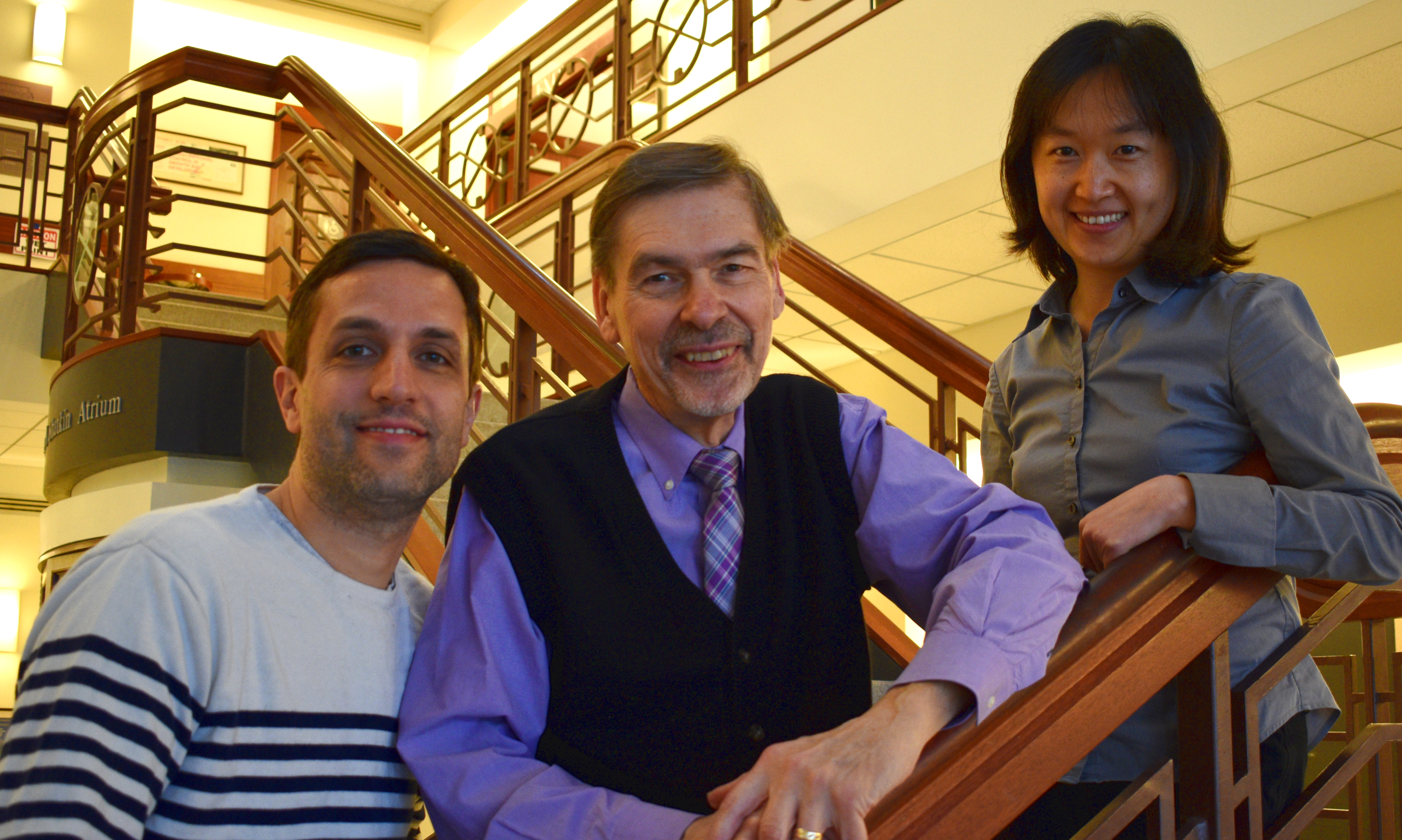Epilepsy
Hope for Repurposing an Anti-Diabetic Drug as a Potential Therapy in Pediatric TBI



Posted February 7, 2020
Huaye Zhang, Ph.D., Robert Wood Johnson Medical School, Rutgers, The State University of New Jersey

From left to right: Mladen-Roko Rasin, M.D., Ph.D., David Crockett, M.A., Ph.D., and Huaye Zhang, Ph.D.
In 2014, approximately 23,000 children in the United States sustained a traumatic brain injury (TBI) that required hospitalization.1 A TBI has many long-lasting potential consequences including epilepsy, depression/anxiety, and learning or memory problems. The consequences and treatments of TBI in those with developing brains are vastly understudied. Neurotrophins, which are neuroprotective following TBI, are secreted proteins that are important for the survival, development, and function of brain cells. Neurotrophins are a potential therapeutic treatment for TBI; however, they do not survive long inside of the body and cannot easily get into the brain, which limits their therapeutic potential. One way around this problem is to explore neurotrophin effector proteins, which can change the neurotrophin’s activity, signaling, or expansion.
Dr. Zhang and her colleagues Drs. Mladen-Roko Rasin and David Crockett recently identified two novel effector proteins, named Par1 and HuD, within the neurotrophic pathways that have yet to be studied in the context of TBI. The team discovered that Par1 and HuD levels are decreased following pediatric TBI. In addition, TBI disrupts the function of these proteins in development of brain cells, and their decrease following TBI increases seizure susceptibility and impairs mental function. Supported by a Fiscal Year 2017 (FY17) Epilepsy Research Program (ERP) Idea Development Award, Drs. Zhang, Rasin and Crockett were able to expand their previous research and determine that the loss of Par1 facilitates the activation of microglia, which are brain immune cells, after TBI, thus increasing inflammation in the brain. Metformin, an anti-diabetic drug, stimulates Par1, and when it is given to mice after a TBI, neuroinflammation is reduced. Metformin treatment following TBI also reduces emotional disturbances and improves spatial learning and memory.
Dr. Zhang’s data thus far indicate that Metformin is a potential treatment for TBI. For the remainder of their FY17 ERP Award, Dr. Zhang and her team will continue to address the impact of Par1 and HuD on neuroinflammation, behavioral changes, as well as cellular and circuit changes following pediatric TBI. The team aims to determine whether they can leverage Par1 and HuD to promote regeneration following TBI and subsequently reduce posttraumatic epilepsy.
Reference:
1 https://www.cdc.gov/traumaticbraininjury/data/tbi-edhd.html
Publication:
DiBona VL, Zhu W, Shah MK, Rafalia A, Ben Cheikh H, Crockett DP, Zhang H. Loss of Par1b/MARK2 primes microglia during brain development and enhances their sensitivity to injury. J Neuroinflammation. 2019 Jan 17;16(1):11. doi: 10.1186/s12974-018-1390-3. PubMed PMID: 30654821; PubMed Central PMCID: PMC6335724.
Link:
Last updated Friday, December 13, 2024














